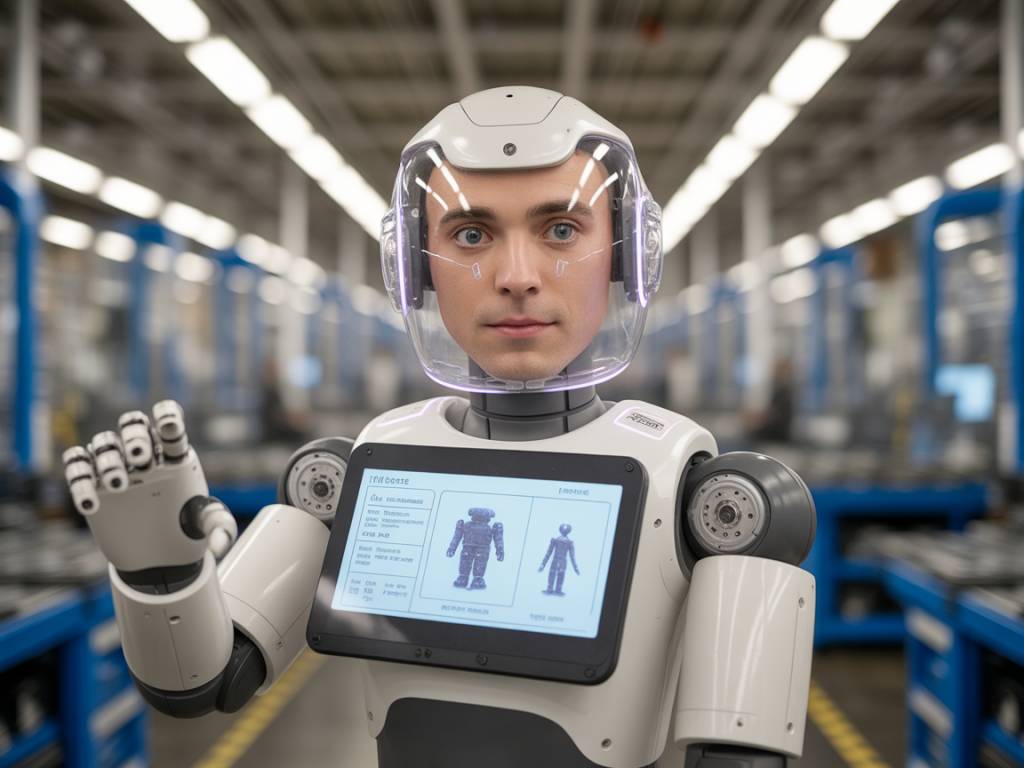Humanoid Robots in the UK: From Sci-Fi to the Factory Floor
Once confined to the realm of Hollywood blockbusters and research labs, humanoid robots are now stepping into an altogether more utilitarian environment — UK factories. In logistics centers, automotive plants, and electronics assembly lines, bipedal robots with dexterous hands and computer vision are gradually proving they’re more than just marketing gimmicks. But what’s really driving this transition, and what impact could it have on British industry?
Let’s look beyond the hype and into the mechanics of why humanoid robots are finding their place alongside workers in today’s industrial landscape.
Labouring Shortages Accelerate Automation Deployment
If one variable explains the growing presence of humanoid robots in UK factories, it’s the acute labour shortage. According to the British Chambers of Commerce, nearly 80% of manufacturers have reported difficulties in recruiting skilled staff, especially in repetitive or physically taxing roles. Brexit, demographic shifts, and an aging workforce are contributing factors.
For firms like Sheffield-based precision engineering company Thorndale Ltd, the challenge is not just recruiting, but retaining staff on tasks like repetitive assembly or material handling. “We’ve posted the same vacancy eight times in six months,” notes operations director Hannah Leeming. “Eventually, you start asking: is there a machine that can do this consistently?”
Enter the humanoid robot — not just a mechanised arm or conveyor belt, but a flexible, human-shaped machine capable of navigating a typical work environment designed for people. Suddenly, automation is no longer limited to bespoke infrastructure. It’s plug-and-play.
Robotics Firms Betting on Versatility
The UK scene has seen notable entries from international players such as Agility Robotics, Figure, and Tesla’s much-discussed Optimus robot. Closer to home, companies like Engineered Arts, a Cornwall-based firm known for its expressive humanoid robots, are pivoting parenthesis on industrial applications.
Agility Robotics recently partnered with a Midlands-based logistics group to pilot their Digit robot — a two-legged machine with articulated arms and stereoscopic vision — in warehouse roles. Tasks include moving boxes, emptying totes, and even re-stocking shelves dynamically based on order flow.
This isn’t speculation. In one pilot at an automated distribution centre in Rugby, three humanoid units operated alongside 20 human workers on overnight shifts, effectively replacing the need for six temporary staff who previously rotated through high-turnover roles.
The key advantage cited? Versatility.
“Humanoid form factors aren’t just a novelty,” says Dr. Pritesh Malde, chief roboticist at FlexForge Robotics. “They allow the machine to use tools, navigate stairs or narrow corridors, and interact with infrastructure designed for humans — elevators, doors, levers. Retrofitting the site becomes unnecessary.”
Cost vs. Benefit: Are They Worth It?
The elephant in the room remains cost. A single humanoid robot unit can range anywhere from £60,000 to over £100,000, depending on specifications and software capabilities. For SMEs, this poses a genuine barrier.
However, several UK firms are experimenting with leasing models. Much like photocopiers or CNC machines, industrial robots can be hired with maintenance and software support bundled into monthly fees. One pilot program at a Sunderland electronics assembler saw a humanoid leased at £2,900 per month over a 36-month period — less than the cost of two full-time equivalents at minimum wage.
Even so, industry insiders agree: humanoids are not replacing all human jobs — not yet. What they are replacing are “no-value-add” tasks: palletising, basic sorting, and repetitive walking tasks across large spaces. This frees up human workers to focus on inspection, problem-solving, and quality control.
Real Factory Use Cases in the UK
Among the first movers in the UK is a Leicestershire-based textiles manufacturer, Colton Fabrications, which operates seasonal production lines. For years, the company struggled to maintain consistent staffing during summer surges in demand, often losing time on training new operators with each cycle.
In 2023, they deployed two humanoid robots developed by a Dutch startup to assist in the finishing and packaging department. Initial efficiency gains were modest — around 11% — but the long-term benefit became clearer after continuity was measured across quarters and year-to-year productivity uplift reached 24%.
Another example comes from BAE Systems, where humanoid units are being trialled for intricate cable routing and component installations on submarine modules. This forms part of a broader Defence & Manufacturing Automation Roadmap outlined by the government’s Made Smarter initiative.
R&D Ecosystem and Policy Environment
The UK’s robotics innovation landscape has played a supporting role. Bodies like the UK Robotics and Autonomous Systems Network (UK-RAS) and the Catapult network foster collaboration between academia and industry. Grants and R&D tax credits also help manufacturers explore these innovations without bearing full commercial risk.
Yet, some insiders warn that the UK risks falling behind. “Germany and Japan are prioritising humanoids in their 2030 industry roadmaps,” notes Sarah Compton, a policy fellow at the Institute for Automation and Society. “Without scaling pilots into national rollouts, we may miss the second wave of productivity growth that these platforms can bring.”
The Department for Business and Trade, however, seems alert to the opportunity. Through its Advanced Manufacturing Plan launched in early 2024, £350 million will be directed towards robotics and AI integration trials in manufacturing settings over the next three years.
What’s Next?
While humanoid robots are not about to replace entire production lines or teams, their adaptability is changing the conversation. Unlike conventional automation, their deployment is not dependent on reengineering workflows or redesigning space. This makes them especially attractive to SMEs, legacy manufacturers, and seasonal businesses — constituencies often left behind by earlier waves of industrial automation.
Key areas to watch include the maturation of robotic AI (particularly in general task planning), safety standards in mixed human-robot environments, and the role of regulatory bodies such as the HSE in guiding best practices.
In short: humanoid robots are not the ultimate solution, but they are proving to be a viable one. For UK factories battling chronic labour gaps while striving for efficiency, they’re less a luxury and more a strategic necessity — one with potential to reshape workforce dynamics without ripping up the shop floor.
And perhaps most critically, they represent an inflection point where technology begins adapting to the factory — rather than the factory having to adapt to the technology.
Key Takeaways for Industrial Leaders
- Humanoid robots offer adaptability and can function in existing human-centric factory environments without major redesigns.
- Labour shortages are the driving force accelerating the adoption of humanoid platforms, especially for repetitive or high-turnover tasks.
- Cost models are evolving, making deployment potentially viable for SMEs through leasing and RaaS (Robot-as-a-Service) offerings.
- Pilots in the UK show promising productivity gains, particularly in logistics, textiles, electronics, and defence manufacturing.
- Policy support and R&D funding will be critical in scaling adoption and ensuring the UK remains competitive in industrial robotics.
The march of humanoid robots into UK factories isn’t happening overnight — but it is happening. As with most industrial revolutions, it begins not with fireworks, but with a quiet shift on the factory floor.




